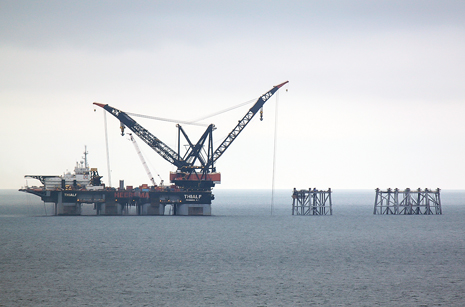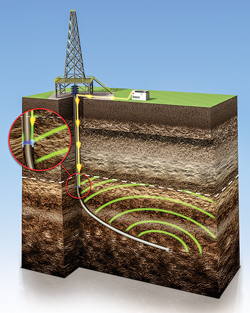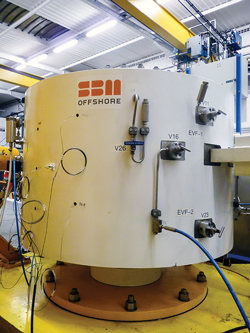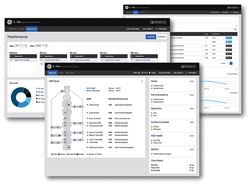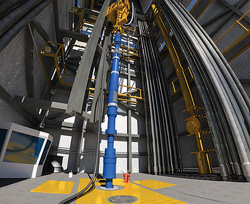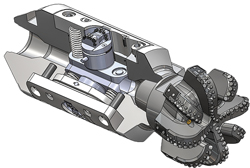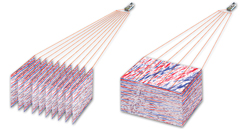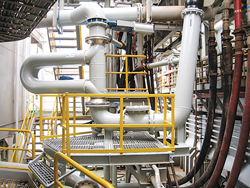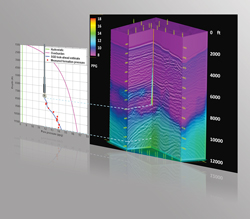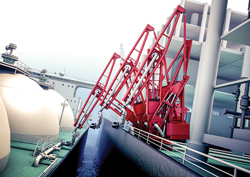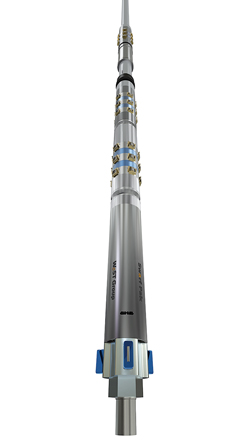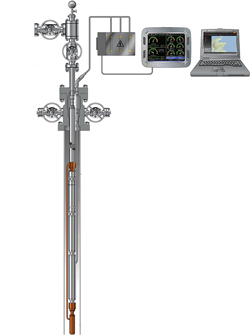OTC 2014 to delve into mega-projects, talent resources and the impact of unconventionals
This year, the OTC will celebrate a major milestone, marking four-and-a-half decades of existence, and coming off of its second-largest attendance in show history in 2013, when more than 104,000 people flocked to Reliant Park.
|
This year, the OTC will celebrate a major milestone, marking four-and-a-half decades of existence, and coming off of its second-largest attendance in show history in 2013, when more than 104,000 people flocked to Reliant Park. The event will be held at the same venue this year, on May 5–8, with technical presentations, an exhibition of international industry players, and special programs for professionals at all rungs of the career ladder. Updates from some of the world’s largest upstream projects, as well as outlooks for various sectors of the offshore industry, are slated for discussion at OTC 2014. Annual OTC dinner. The fourth Annual OTC Dinner will open the 45th anniversary year of OTC, and will again be held at Reliant Stadium, at the center of the 2014 conference grounds. The dinner, which will recognize this year’s award recipients, as well as celebrate the event’s anniversary with a concert, will be held Sunday, May 4, from 5:50 to 10 p.m. In addition to being an invaluable networking opportunity for industry professionals, the dinner will donate proceeds to a chosen organization. The 2014 recipient of donations from the Annual OTC Dinner will be Medical Bridges, a Houston-based organization that has provided medicine and medical supplies to healthcare professionals in need since 1997. Awards presentation. Following a networking reception and dinner, the 2014 OTC Distinguished Achievement Award recipients will be announced. When selecting annual award winners, the OTC Awards Committee considers major technological, humanitarian, environmental and leadership contributions to the industry. This year, the OTC Distinguished Achievement Award for Companies, Organizations and Institutions will be presented to BP, for its deployment of LoSal EOR (Reduced Salinity Enhanced Oil Recovery) technology at the Clair Ridge development, offshore UK. The project marks the first sanctioned, full-field use of the technology offshore. Improved oil recovery at Clair Ridge is aided by LoSal, which employs reduced-salinity water, instead of sea water, to release more oil from the rock surface during waterflooding.
This year’s conference will also recognize two individuals for their contributions to the oil and gas industry. Selected to receive the OTC Distinguished Achievement Award for Individuals is Carl Arne Carlsen, senior V.P. and a member of the governing board at DNV. He is being honored for significant advancements in the safety and reliability of mobile offshore structures, and the practical applications of risk management.
The OTC Heritage Award will be presented to Susan Cunningham, in recognition of her leadership and technical contributions in the Gulf of Mexico, West Africa and the Eastern Mediterranean. She is the senior V.P. of Gulf of Mexico, Africa, Frontier Ventures and Business Innovation for Noble Energy. Conference highlights. Focusing on global insights into technological advances, safety and environmentally focused solutions, as well as economic and regulatory impacts, this year’s program features technical information related to:
Featured events and activities. On May 5, from 7:30 to 9 a.m., BP Chairman, CEO and President John Mingé will discuss “America’s energy renaissance” during a topical breakfast. Discussing the resurgence of domestic production and decreases in import volumes, Mingé will explore the future of energy in America, and the challenges it will face. Later that day, from 12:15 to 1:45 p.m., three topical luncheons will give attendees the chance to learn more about “The future of the UK Continental Shelf,” “Deepwater brownfields: Yes, we have to tackle it right now!” and “CAPEX compression and the impact on the offshore services community.” The second day of the conference, Tuesday, May 6, will begin with an industry breakfast, from 7:30 to 9 a.m., covering Australia, including “expert views on doing business in emerging areas of interest for the oil and gas industry.” This event is organized by OTC and the U.S. Department of Commerce. Elsewhere during the same timeframe, four topical breakfasts are being offered, focusing on topics including:
The day will also feature five topical luncheons, held from 12:15 to 1:45 p.m., scheduled to discuss offshore policy developments within the U.S. Department of the Interior; thoughts from Shell on sustainable deepwater development; potential new horizons in frontier exploration from Total E&P; the idea of increasing hydrocarbon production in an anti-hydrocarbon era; and a paradigm change in water management. In the same vein as Tuesday’s opening industry breakfast, Wednesday, May 7, will begin with a breakfast event covering oil and gas business opportunities in Mexico; it will be held from 7:30 to 9 a.m. The day’s topical breakfasts, scheduled concurrently with the industry breakfast, will take a closer look at four topics:
Wednesday’s topical luncheons, also held from 12:15 to 1:45 p.m., will include discussions of the BP Energy Outlook 2035; GE’s views on serving the global energy industry for the future; the potential for midstream gas monetization, according to Total; and the entrepreneurial perspective of independents, presented by a Noble Energy speaker. The last day of the conference, Thursday, May 8, will open with an industry breakfast on East Africa from 7:30 to 9 a.m. A topical breakfast during the same time will feature a discussion of “Pursuing operational excellence through safety management systems” with representatives from the Center for Offshore Safety, and the Bureau of Safety and Environmental Enforcement (BSEE). One topical luncheon is scheduled for the day, from 12:15 to 1:45 p.m., and will address “Improving safety management systems and recognizing contributions,” with input from the Center for Offshore Safety and BSEE.
System reduces signal attenuation downhole
Weatherford received an award for its CasingLink EM Antenna System, which addresses the signal attenuation encountered while drilling wells at deeper depths using an EM telemetry system. This method employs an insulated wire that is externally attached to a standard casing string; a borehole transmitter located downhole and surface receiver for collecting signals at the surface. The CasingLink EM antenna system allows wells to be drilled using EM technology, where it was previously impossible. There is negligible signal attenuation within the transmission wire, which increases telemetry depth. It extends the depth range of conventional EM systems, and allows operators to take advantage of all the benefits of EM systems, such as decreased survey time, increased reliability and tolerance to LCM.
Very high-pressure fluid swivel
Building on SBM Offshore’s know-how and experience in state-of-the-art fluid swivel design, this new technology increases the operating range of high-pressure swivels by using a patented technique to cascade the pressure drop over multiple seals. The 12-in., prototype toroidal swivel has been qualified to 12,000 psig, including long-term endurance test runs, and has the potential to operate at over 14,500 psig. This swivel is aimed specifically at gas or water injection from FPSOs into ultra-high-pressure reservoirs, such as the Lower Tertiary fields in the U.S. Gulf of Mexico.
Isolated pump for secondary intervention
FMC Technologies Schilling Robotics has developed an isolated pump—Iso Pump—that enables secondary intervention for BOPs in compliance with API Standard 53. The pump is integrated tightly with FMC’s UHD III remotely operated vehicle (ROV), and meets the 45 sec requirement for closing BOP shear rams. The pump consists of independent pistons synchronized with software control. Flexible configuration allows optimization for a variety of demands, and can provide, simultaneously, up to 50 gpm at 5,000 psi. Compared to existing industry solutions, this system is depth-insensitive and can save operators up to $4 million per rig.
Solution helps drillers monitor, maintain BOPs
The SeaLytics solution from GE Oil & Gas enables drilling contractors to monitor performance, and plan maintenance of BOPs, using predictive analytics based, on actual component performance data. The solution can improve BOP system uptime, reduce unnecessary maintenance and lead to better cost forecasting, all of which provide significant performance benefits to the user.
Wireless top drive cement head
The Baker Hughes LaunchPRO wireless top drive cement head is a remote-activation system for deepwater applications. The system launches balls, plugs or darts wirelessly during cementing of extremely heavy subsea long strings, and long, heavy liners. Its remote wireless operation reduces HSE risk by reducing manual intervention and rig time, while optimizing reliability. LaunchPRO’s operation is powered by rig air through a single pneumatic hose that can be tethered to the cementing line, reducing the risk of damage during cementing operations. A wireless pressure transducer provides real-time data to the cementing operator, to allow for adjustments during cementing operations.
Reducing rathole length, while saving rig time
In a traditional reaming-while-drilling BHA, the reamer is placed above the RSS and LWD tools, creating a long rathole and requiring an extra trip to enlarge the hole to TD. Challenged to design a tool to increase efficiency, Halliburton has introduced a solution that has the added benefits of optimized steerability and fluid flow, and reduced tool length based on the proven reliability of the NBR reamer technology. The TDReam tool is Halliburton’s newest downhole innovation, designed to reduce rathole length and reach TD in one run.
System captures 3D measurements of seismic wavefields
WesternGeco’s IsoMetrix marine isometric seismic technology enables the first truly 3D measurement of seismic wavefields using towed streamers. It delivers high-fidelity point-receiver seismic data, while overcoming spatial bandwidth compromises that limited all previous towed-streamer methods. A new streamer design, that includes measurement of the vertical and crossline gradient of the seismic wavefield, enables un-aliased reconstruction of the pressure wavefield between the streamers. The resulting fine isometric sampling, in both crossline and inline directions, provides the most accurate images of the subsurface, making the data suitable for many interpretation and reservoir modeling applications in exploration and reservoir development.
Fluid loss and gain detection service
The FLAG fluid loss and gain detection service, from Geoservices, a Schlumberger company, aims to meet the growing challenges of increasingly complex drilling programs, in ever-deeper waters, with an early warning system that is highly sensitive to fluctuations, but intelligent enough to help prevent false alarms. With faster response times, compared to previous systems, the FLAG service provides accurate fluids monitoring and precise coriolis flow metering, with any drilling fluid on any rig, and in operating conditions that include drilling, tripping, circulating and cementing.
Pore-pressure prediction ahead of the bit
Schlumberger’s Seismic Guided Drilling (SGD) predicts formation pressures hundreds of meters ahead of the bit while drilling. The SGD service uses both surface seismic and logging-while-drilling (LWD) data to provide a 3D look-ahead velocity model with reduced uncertainty. This model leads to better geological and geomechanical description, enabling proactive drilling decisions, particularly in deepwater exploration. Velocities ahead of the bit are re-calculated from seismic reflections by using LWD velocities behind the bit as a constraint. Compared with pre-drill predictions, this provides much more accurate results, which can be used in velocity-to-pressure transforms, to give more reliable formation pressures.
Footless loading arm aids in LNG transfer
FMC Technologies’ Offshore Footless Loading Arm (OLAF) has been developed specifically for LNG transfer between FLNGs and conventional LNG carriers, in side-by-side moored arrangement, far from the coast in offshore conditions. The OLAF design is able to accommodate large elevation differences between the FLNG deck, where it is based, and the LNG carrier piping connection, without overloads. OLAF covers side-by-side operability in harsh environmental conditions, with its concept, its targeting system for connection assistance, and its Constant Position Monitoring System, SIL3, to manage emergency disconnection.
Technology increases milling speed, reduces rig time
SwarfPak is a superior technology for P&A and slot recovery, with reduced rig time and reduced environmental footprint. The most revolutionary characteristic of the technology, from West Production Technology AS, is that all of the swarf particles are deposited and left downhole, avoiding the use of surface swarf-handling equipment, which is a major logistical and environmental challenge. Another benefit is that the milling speed is increased greatly. Typical milling speed with SwarfPak is three to six times faster than conventional milling technology.
System preserves well surveillance to optimize production
On average, 15% of ESP well-monitoring systems fail to provide data following earth leakage in the ESP cable—an unresolved issue since the 1970s. While the ESP continues to run, interference renders gauge readings unobtainable. Operators are faced with performing workover operations, or running motors at lower rates, and with a larger head of fluid to safeguard from pump-off. GE Oil & Gas’ Zenith GFI Ground Fault Immune ESP monitoring system offers a solution, which cannot be disturbed by ground faults, giving operators the ability to maintain well surveillance that is essential for production optimization and pump protection. |
- Prices and governmental policies combine to stymie Canadian upstream growth (February 2024)
- U.S. producing gas wells increase despite low prices (February 2024)
- U.S. drilling: More of the same expected (February 2024)
- U.S. oil and natural gas production hits record highs (February 2024)
- U.S. upstream muddles along, with an eye toward 2024 (September 2023)
- Canada's upstream soldiers on despite governmental interference (September 2023)

